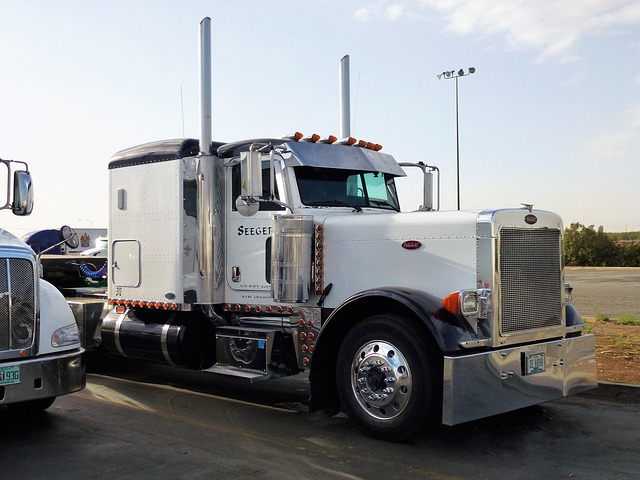Looking to register your car in California? Navigating the process can seem daunting, but with the right steps, it’s a breeze. This guide breaks down everything you need to know, from understanding crucial California car registration requirements to completing essential VIN verification. We’ll walk you through gathering necessary documents, performing the VIN check, and either completing online registration or visiting the DMV in person. By the end, you’ll have your plates and be legally registered.
- Understand California Car Registration Requirements
- Gather Necessary Documents for VIN Verification
- Perform Vehicle Identification Number (VIN) Check
- Complete Online Registration or Visit DMV
- Pay Registration Fees and Receive Your Plate
Understand California Car Registration Requirements

Before registering your car in California, it’s crucial to understand the state’s specific requirements for vehicle identification number (VIN) verification. The process involves ensuring that your vehicle meets all legal standards and is safe for road use. In California, a VIN inspection is typically conducted by a specialized service or an authorized agent of the Department of Motor Vehicles (DMV). This inspection verifies that your car’s VIN is accurate and matches the vehicle’s characteristics, such as its make, model, year, and other essential details.
A key aspect of this process is using a reliable method for VIN verification, which can be facilitated by mobile vin verifiers or inspectors. These services offer convenience by allowing you to complete the inspection without having to visit a DMV office. A mobile vin inspector can check your car’s history, including any previous accidents, outstanding loans, or issues that could impact registration. By utilizing these modern tools, you ensure that your California car registration is accurate and up-to-date, avoiding potential delays or complications down the line.
Gather Necessary Documents for VIN Verification

To register your car in California, you’ll need to go through a VIN (Vehicle Identification Number) verification process. This involves gathering essential documents that prove ownership and ensure your vehicle’s legitimacy. Before heading to the DMV, make sure you have all the necessary paperwork ready. These documents include your vehicle’s registration certificate, proof of insurance, and a valid driver’s license. Additionally, you’ll require the vehicle’s title, if applicable, as well as any previous registration records.
For a seamless VIN verification process, consider using a mobile vin verifier or mobile vin verification service. These services allow you to quickly and conveniently obtain the necessary information from your car’s VIN, saving you time and effort. With their help, you can ensure that all details are accurate and up-to-date, making the registration process more efficient.
Perform Vehicle Identification Number (VIN) Check

Before registering your car in California, it’s crucial to perform a Vehicle Identification Number (VIN) check. This step is essential for ensuring that the vehicle is authentic and has not been reported as stolen or had any outstanding issues. A mobile VIN verification service can be incredibly handy here, allowing you to complete this process conveniently from anywhere. Simply use your smartphone to access a reliable mobile vin verifier and input your vehicle’s unique VIN number.
The app will then conduct a thorough vin inspection, cross-referencing the data with various state and national databases to verify the car’s history. This includes checking for any outstanding recalls, previous accidents, or potential fraud. By ensuring the vehicle passes this critical step, you can rest assured that you’re submitting accurate information during the registration process, which is key in California’s stringent motor vehicle regulations.
Complete Online Registration or Visit DMV

In California, registering your car can be done either online or in-person at a DMV office. For a hassle-free experience, many opt for completing the registration process online. This method allows you to fill out all necessary forms and submit required documents digitally. You’ll need to provide details such as your personal information, vehicle specifications, and proof of insurance. Additionally, an accurate vin inspection is crucial during this stage; ensure your vehicle’s unique identifier (Vehicle Identification Number or VIN) is verified to avoid any discrepancies.
If you prefer a more traditional approach, visiting the DMV is another option. Bring all required documents, including proof of ownership and identification, to the nearest California DMV office. A vin inspection might still be necessary for in-person registration, especially if you’re trading in an old vehicle or transferring a title. Consider utilizing a mobile vin verifier for convenience; these services offer on-site or mobile vin inspection options, making it easier to complete your car registration requirements.
Pay Registration Fees and Receive Your Plate

After completing your vehicle’s registration application and providing necessary documents, the next step is to pay the registration fees. These fees vary based on the type of vehicle and other factors. You can typically pay online through the DMV website or in person at a local California DMV office. Once the payment is processed, you’ll receive your vehicle’s license plate. This plate is assigned uniquely to your car and serves as a visual indicator of its official registration status.
Remember, proper plate attachment is crucial for legal driving. Ensure the plates are securely fastened according to the California Department of Motor Vehicles (DMV) guidelines. Additionally, consider utilizing mobile vin verification services, such as those offered by specialized apps or tools, to streamline the process and ensure accurate vehicle identification number (VIN) data during registration, including inspections like a VIN inspection or using a mobile vin verifier.
Registering a car in California is a straightforward process that requires understanding key requirements, gathering essential documents for VIN verification, and either completing online registration or visiting a DMV office. By following these steps and ensuring a successful VIN check, you’ll be on your way to secure California plates for your vehicle.
